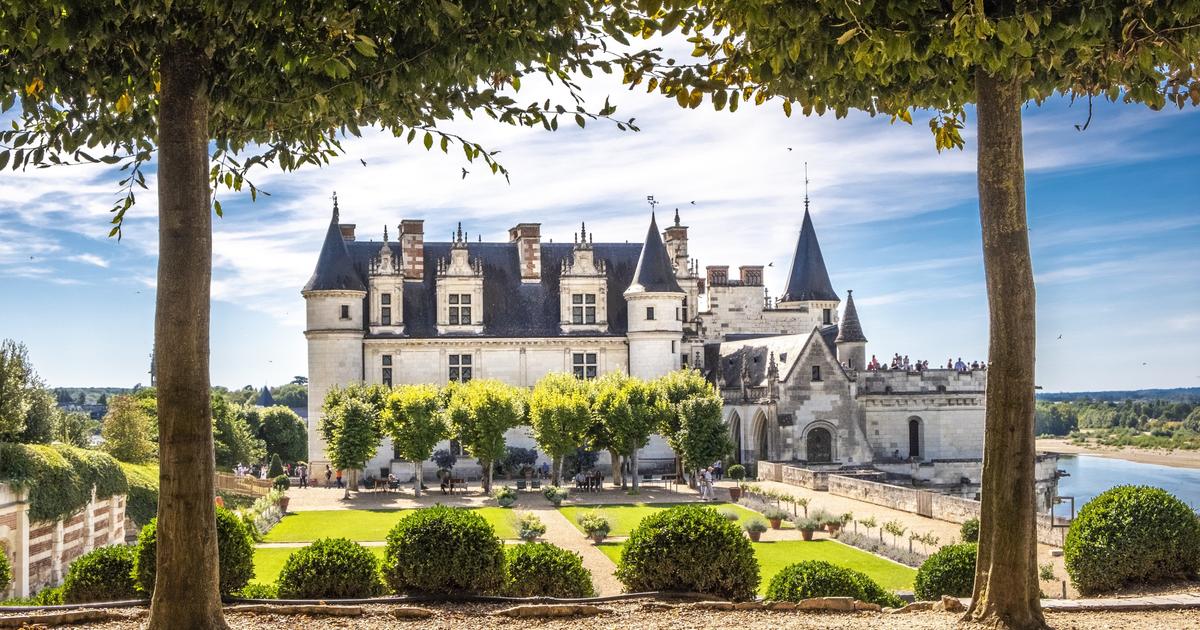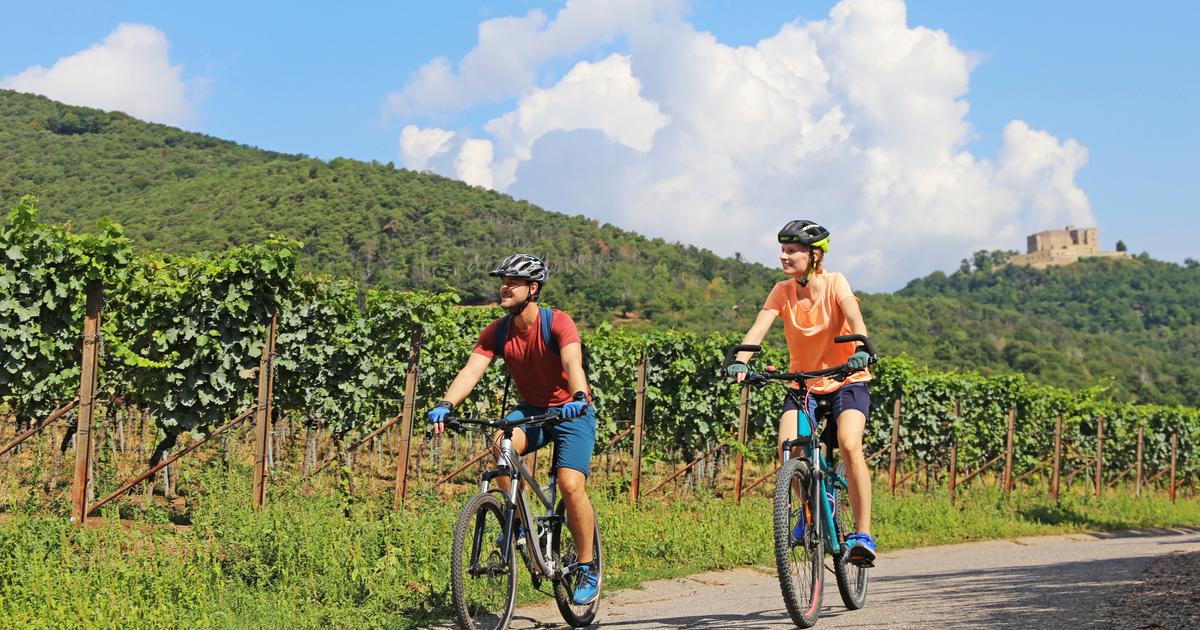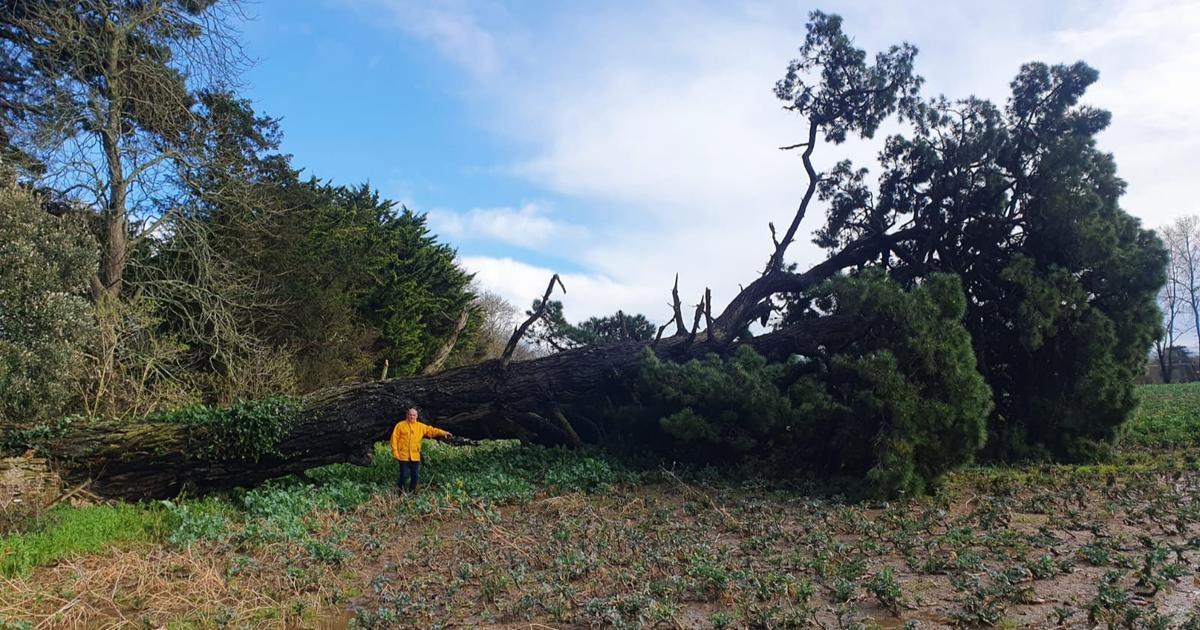They adorn the banks of the river like jewels on the arm of a princess.
The castles of the Loire, for the most part built or renovated during the Renaissance to rival the finesse of Italian art, offer an almost inexhaustible visit.
To have visited them all is to offer yourself the chance to admire them a second time: their beauty is revealed as the visits follow one another, like the different viewings of a cult film.
Our selection of these monuments, witnesses of a time when military equipment gave way to aesthetic elements.
To discover
Stays in France: weekends, hotels and tailor-made stays from our partners
Read alsoOur must-sees in Blois, gateway to the Loire castles
Château d'Amboise, elevated elegance
Perched 40 meters above the water at the confluence of the Amasse and the Loire, the Château d'Amboise became a royal residence during the reign of Charles VIII, at the end of the 15th century.
The sovereigns gradually transformed the old medieval stronghold into a sumptuous royal palace.
Among the illustrious guests of the castle such as Catherine de Medici, François Ier or Jean de la Fontaine, one of them still “resides” there.
This is Leonardo da Vinci, whose tomb is located in the Saint-Hubert Chapel, within the palace grounds.
Royal Castle of Amboise, Montée de l'Emir Abd el Kader, 37400 Amboise.
From 9 a.m. to 6.30 p.m., open every day except January 1 and December 25.
Admission: €13.50 (7-18 years: €9.20).
Château de
Cheverny, Hergé's muse
The north facade of the Château de Cheverny, seen from the garden of apprentices.
Jose Ignacio Soto / Adobe Stock
In 1624 and 1640, the Count of Hurault and his wife Marguerite Gaillard de la Morinière transformed a fortress built in 1500 into a castle that was a forerunner of classical French architecture.
Inside, the sumptuous furniture testifies to the French art of living, with beautiful pieces such as the 17th century Gobelins tapestry, the Louis XIV period chest of drawers in the Boulle style or the collection of arms and weapons. armor.
The elegance of the south facade in Bourré stone is enhanced by busts of Roman emperors, all giving the building a charm that has stood the test of time.
It will even seduce Hergé, who is inspired by it for Moulinsart.
An interactive exhibition has also been devoted to Tintin since 2001. The castle is surrounded by an English-style park with sequoias,
Château de Cheverny, avenue du Château, 41700 Cheverny.
Such.
: 02 54 79 96 29. Open every day from 9:15 a.m. to 6:30 p.m.
Admission to the castle and gardens: €13.50 (free for children under 7; on sale only on site).
Château Le Clos Lucé, the lair of Leonardo da Vinci
The Château du Clos Lucé today retraces the life of the Italian genius Leonardo da Vinci.
David Brown / Adobe Stock
Located a few meters from the royal castle of Amboise, the castle of Clos Lucé welcomed Leonardo da Vinci for the last years of his life.
At the invitation of François I, the painter moved there with three of his masterpieces: The Mona Lisa, The Virgin, the Child Jesus and Saint Anne and Saint John the Baptist.
Today, the castle retraces the life of the Italian genius.
The rooms are reconstructed there as in the time of the artist, while the garden illustrates the influence of nature on his work.
The park is filled with Leonardo's avant-garde inventions: tank, aerial screw or double-span bridge 20 meters high.
If the park has been open since May 3, the castle will welcome visitors again from May 19.
Château du Clos Lucé – Leonardo da Vinci Park, 2, rue du Clos-Lucé, 37400 Amboise.
Such.
: 02 47 57 00 73. Open from 9 am to 7 pm (until 8 pm in July-August).
Admission: €18 (7-18 years: €12.50).
Château d'
Azay-le-Rideau, icon of the French Renaissance
A subtle alliance of French traditions and innovative decorations from Italy, Azay-le-Rideau is an icon of the new art of building in the Val-de-Loire in the 16th century.
Adobe Stock
Built on an island in the middle of the Indre by Gilles Berthelot, treasurer of finances for François 1er and mayor of Tours, and his wife Philippa Lesbahy, between 1518 and 1527, Azay-le-Rideau is the archetype of the pleasure castle.
Influenced by the Italian Renaissance with its two large square houses, the dwelling squared with horizontal bands is reflected in the waters of the river.
Around the skylights, the sculpted decorations abound with heterogeneous elements borrowed both from Antiquity and from the religious register.
The monumental staircase leads to the first floor to the "great hall" which hosted balls and feasts.
The mantelpiece is decorated with a trompe-l'oeil salamander and the famous motto of François 1er: "
Nutrisco et extinguo
», «I feed on it and I extinguish it».
The castle and the park that surrounds it benefited from an extensive restoration program between 2014 and 2017.
Château d'Azay-le-Rideau, 19, rue Balzac, 37190 Azay-le-Rideau.
Such.
: 02 47 45 42 04. Open every day from 9:30 a.m. to 6 p.m. (until 7 p.m. in July-August).
Admission: €11.5 (free for children under 18).
The Château d'Ussé, the legend of
Sleeping Beauty
Nicknamed the castle of "Sleeping Beauty", the castle of Ussé was erected from the 15th to the 18th century, on the banks of the Indre.
Adobe Stock
Coming from the Loire, this fairytale castle leaning against the hillside stands out in the landscape against a backdrop of greenery.
Legend has it that this forest of towers and chimneys inspired Charles Perrault to write
Sleeping Beauty
.
Below the monument were designed by Le Nôtre French gardens admired in particular by Chateaubriand when he visited his friend, the Duchess of Duras.
Beneath the castle, carved into the Touraine tuffeau, cellars and underground passages add to the magic of the place.
In particular, there is a small chapel dedicated to Saint Vincent, the patron saint of winegrowers.
In the park, a Renaissance chapel was built in the 16th century and erected as a collegiate church in 1538.
Château d'Ussé, 37420 Rigny-Ussé.
Such.
: 02 47 95 54 05. Open daily February 13 to November 13 from 10 a.m. to 7 p.m. (until 6 p.m. from October to March).
Entrance: €14 (child from 8 to 16 years old: €5).
Château de
Chinon, an appointment with history
At the crossroads of Anjou, Poitou and Touraine, the royal fortress of Chinon is a unique medieval testimony in the Loire Valley.
Adobe Stock
The limestone hillside that forms a promontory overlooking the Vienne has been home to an enclosure since the Iron Age.
Today, the oldest parts of the castle date from the reconstruction ordered by the Count of Blois in the 11th century.
Renovated many times, notably by Philippe Auguste, who conquered the castle after a siege of several months, the castle was enlarged and reinforced before being gradually forgotten.
It even became a stone quarry during the Revolution.
Ingeniously renovated, the castle can be visited with the help of technology that lets you imagine the great hours of this monumental enclosure, witness to the decisive encounter between Joan of Arc and Charles VII.
Royal fortress of Chinon, 2 rue du château, 37500 Chinon.
Such.
: 02 47 93 13 45. Open every day.
9.30am-7pm from May to August (until 6pm in March, April and September and until 5pm the rest of the year).
Admission €10.50 (children aged 7 to 18 and students: €8.50).
Château de
Chenonceau, a castle on the water
Also called the Château des Dames, Chenonceau spans the Cher.
Adobe Stock
A masterpiece of the Renaissance, the castle rests on the arches of a bridge built by Philibert de l'Orme.
This covered gallery, 60 meters long, erected by Catherine de Medici, overlooks the Cher, a languorous river and tributary of the Loire.
The plan of the castle follows an orthogonal layout.
The so-called bedroom of the five queens (the two daughters and the three beautiful daughters of Catherine de Medici) is richly decorated and houses tapestries from Oudenaarde or Flanders but also paintings signed, among others, by Murillo, Poussin, Rubens, Veronese or Van Dick.
But in Chenonceau, the spectacle is also outside with the parterres of Diane de Poitiers, French-style pleasure gardens composed around the basin but also made up of an orchard and a vegetable patch.
Château de Chenonceau, 37150 Chenonceau.
Such.
: 0820 20 90 90. Open Friday to Monday from 10 am to 5 pm, then until 6 pm from July.
Individual price: €15.
Reduced price €12.
Free for children under 7 years old.
Read alsoBehind the scenes of the Chanel show in Chenonceau
Château de Blois, three wings, three atmospheres
The Château de Blois and its facades in Gothic, Renaissance and Classical styles.
Elijah / Adobe Stock
Who knows how many shenanigans have heard the walls of the rooms of the royal castle of Blois?
Henri IV or Marie de Médicis, during their stay, certainly imagined some of them.
Today the castle is divided into three parts of different styles: Gothic, Renaissance and Classical.
From the outside, we admire in particular the monumental staircase.
Royal Castle of Blois, 6, place du Château 41000 Blois.
Such.
: 02 54 90 33 33. Open every day from 9 a.m. to 6.30 p.m. (until 7 p.m. in July-August and from 10 a.m. to 5 p.m. from November to March).
Admission: €13 (6-17 years: €6.50).
Château de
Chambord, modernity in majesty
The Château de Chambord reopens all of its spaces on May 19, with the exception of the audiovisual room on the ground floor.
aterm / Adobe Stock
Placed on the first list of Historic Monuments in France in 1840, a UNESCO World Heritage Site since 1981, Chambord is surely the most famous of the Loire castles.
Surrounded by a 32 kilometer wall, a forest, gardens, vineyards, vegetable gardens and stables, the castle is a monumental architectural work imagined by François 1er to magnify French diplomacy.
Both geometric and whimsical, massive and subtle, the building houses a rich collection of paintings, tapestries, furniture and art objects.
More than sixty rooms are open to visitors and a collection of 4,500 works of art to discover in superbly refurnished apartments.
The estate the gardens have recently regained their luster with the planting of more than 600 trees,
Château de Chambord, 41250 Chambord.
Such.
: 02 54 50 40 00. Open every day from 9 a.m. to 6 p.m. (until 5 p.m. from November to March).
Admission: €14.50 (free for children under 25).
Château de Loches, the beautiful Middle Ages
A keep 39 meters high overlooks the royal residence of Loches.
Yuriy Brykaylo
Residence of Joan of Arc and François I, the Royal City of Loches reconciles the feudal era with the Renaissance.
A keep 39 meters high, among the best preserved from the Romanesque period, overlooks the royal residence, a jewel of Gothic architecture.
A museum now lives in what was one of the favorite residences of the Valois dynasty, while a soothing medieval-inspired garden has blossomed at the foot of the keep.
As for the children, they set off to discover the City thanks to the playful booklet “Emeline and Amaury”.
Royal City of Loches, 5, place Charles-VII, 37600 Loches.
Such.
: 02 47 19 18 08. Open every day from 9:30 a.m. to 7 p.m. (until 5 p.m. from October to March).
Admission: €10.50 (7-18 years: €8.50).
Château de Chaumont-sur-Loire, the quiet charm
The International Garden Festival of Chaumont-sur-Loire has brought together every year since 1992, in a part of the Estate, a selection of landscape creations related to a particular theme.
Jeantrekkeur - stock.adobe.com
Burned and razed by Louis XI in 1465, the castle of Chaumont-sur-Loire was transformed into a jewel of the Renaissance from 1560. Diane de Poitiers added to the sculptures that decorated the facades the walkways of the entrance gatehouse and the Saint-Nicolas tower.
The castle takes its current form with the destruction of the north wing, which opens a view of the Loire.
Every year since 1992, the International Garden Festival of Chaumont-sur-Loire brings together in part of the 32 hectares of the estate a selection of landscape creations related to a particular theme.
Estate of Chaumont-sur-Loire, 41150 Chaumont-sur-Loire.
Such.
: 02 54 20 99 22. Open every day from 10am to 7pm from April to September (5.30pm or 6pm the rest of the year).
Admission: €19 from April 21 to October 31 (12-18 years: €12).
Château de Villandry, the floral estate
In the heart of the Loire Valley, the castle and gardens of Villandry welcome the public throughout the year.
rysan34 - stock.adobe.com
After leading the Chambord site for several years, Jean le Breton acquired the Villandry estate in 1532. François I's secretary decided to build a Renaissance castle there.
He had the old medieval building demolished, with the exception of the keep against which three dwellings were erected in the shape of a horseshoe.
Medieval heritages and Italian influences are evacuated in favor of a purely French symmetrical style.
Outside, vast gardens adjoin the facades of the castle.
The ornamental garden, an extension of the interior lounges, the vegetable garden, the water garden and the sun garden created at the beginning of the 20th century.
Château de Villandry, 3, rue Principale, 37510 Villandry.
Such.
: 02 47 50 02 09. Open every day from February 5 to November 13 and in December.
Castle and garden entrance: €12.
Gardens only: €7.5 (8 to 18 years old: €7 and €5).
Published in May 2021, this article is subject to an update.
SEE ALSO
- The snow-capped castles of the Loire seen from the sky














